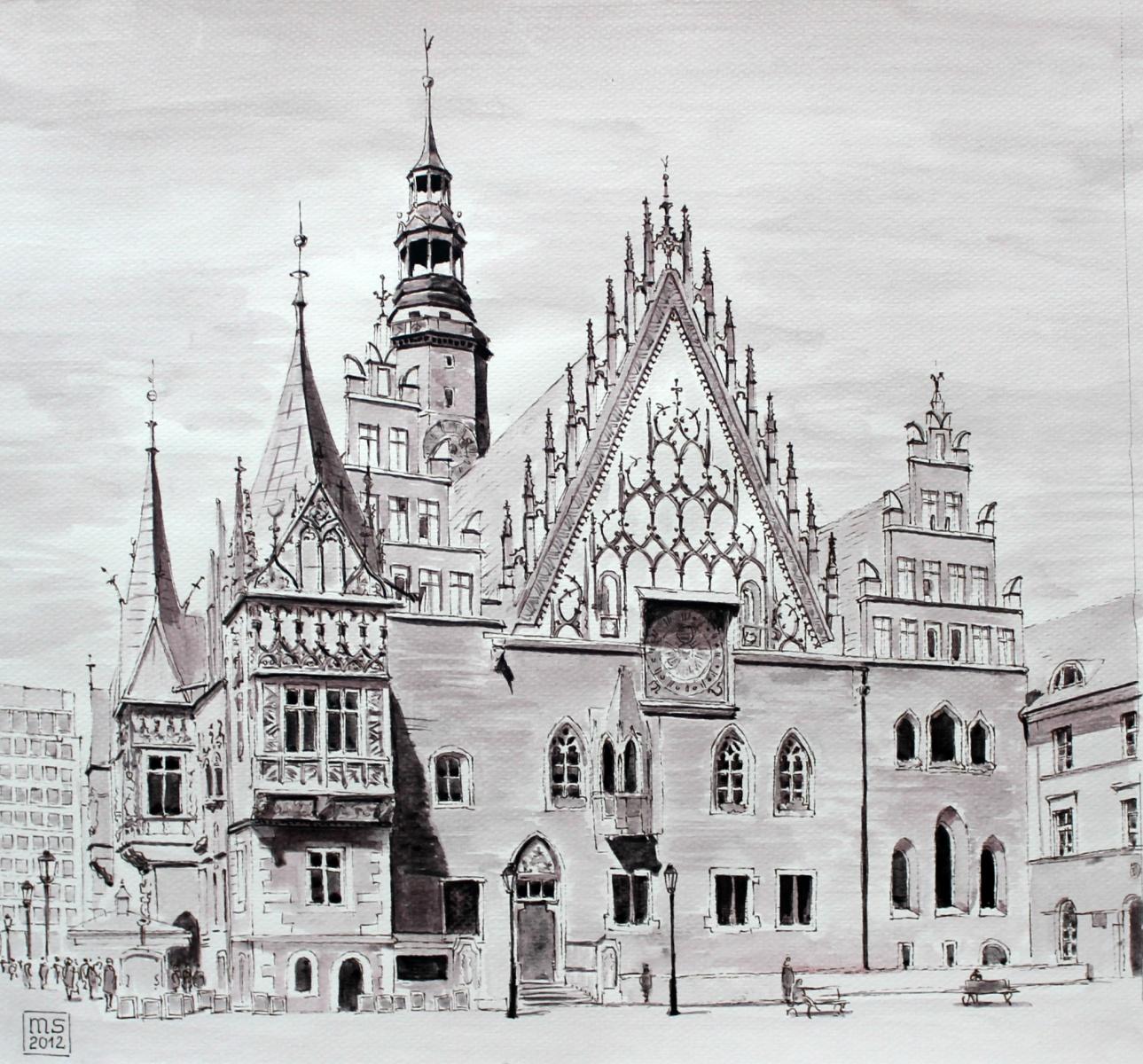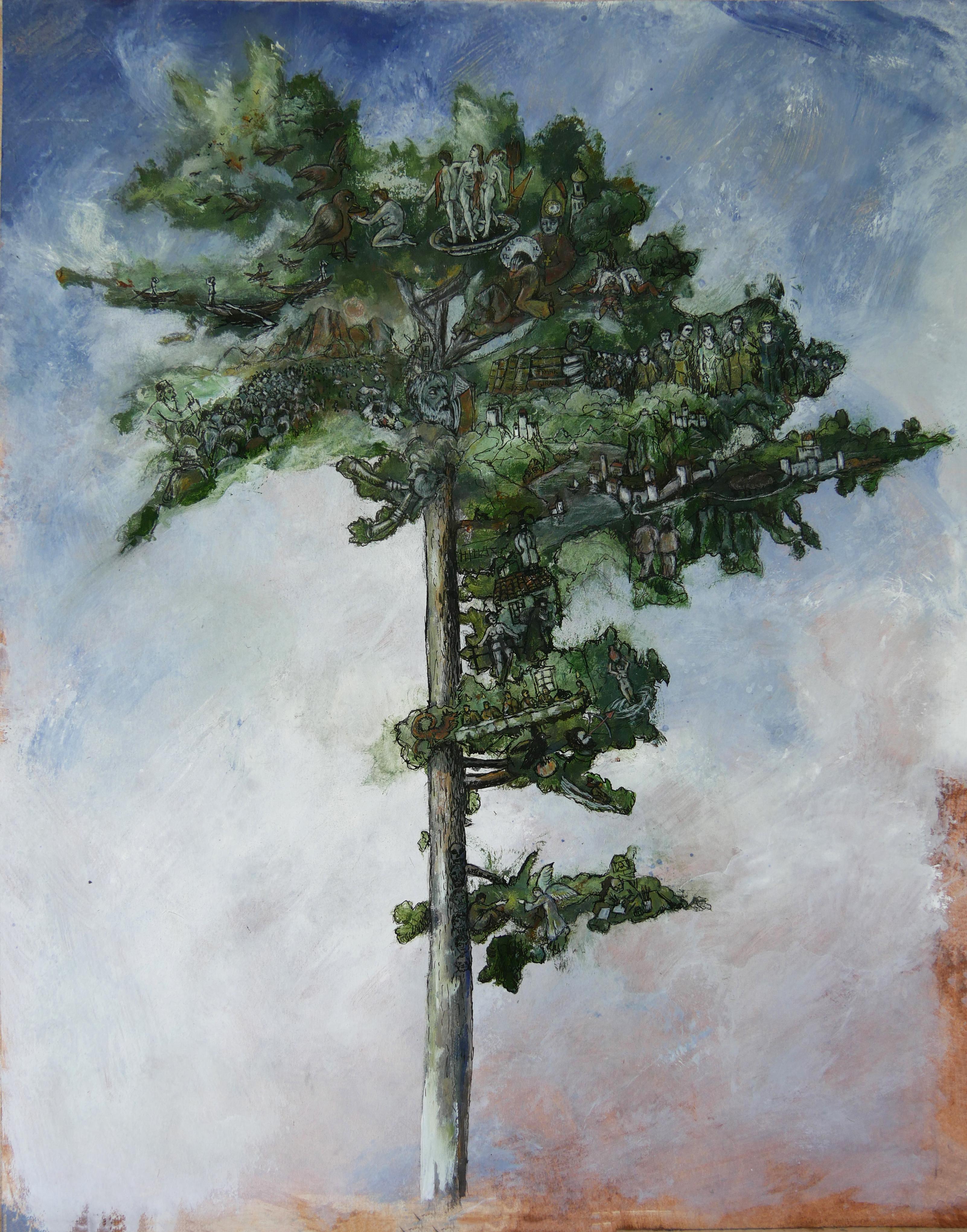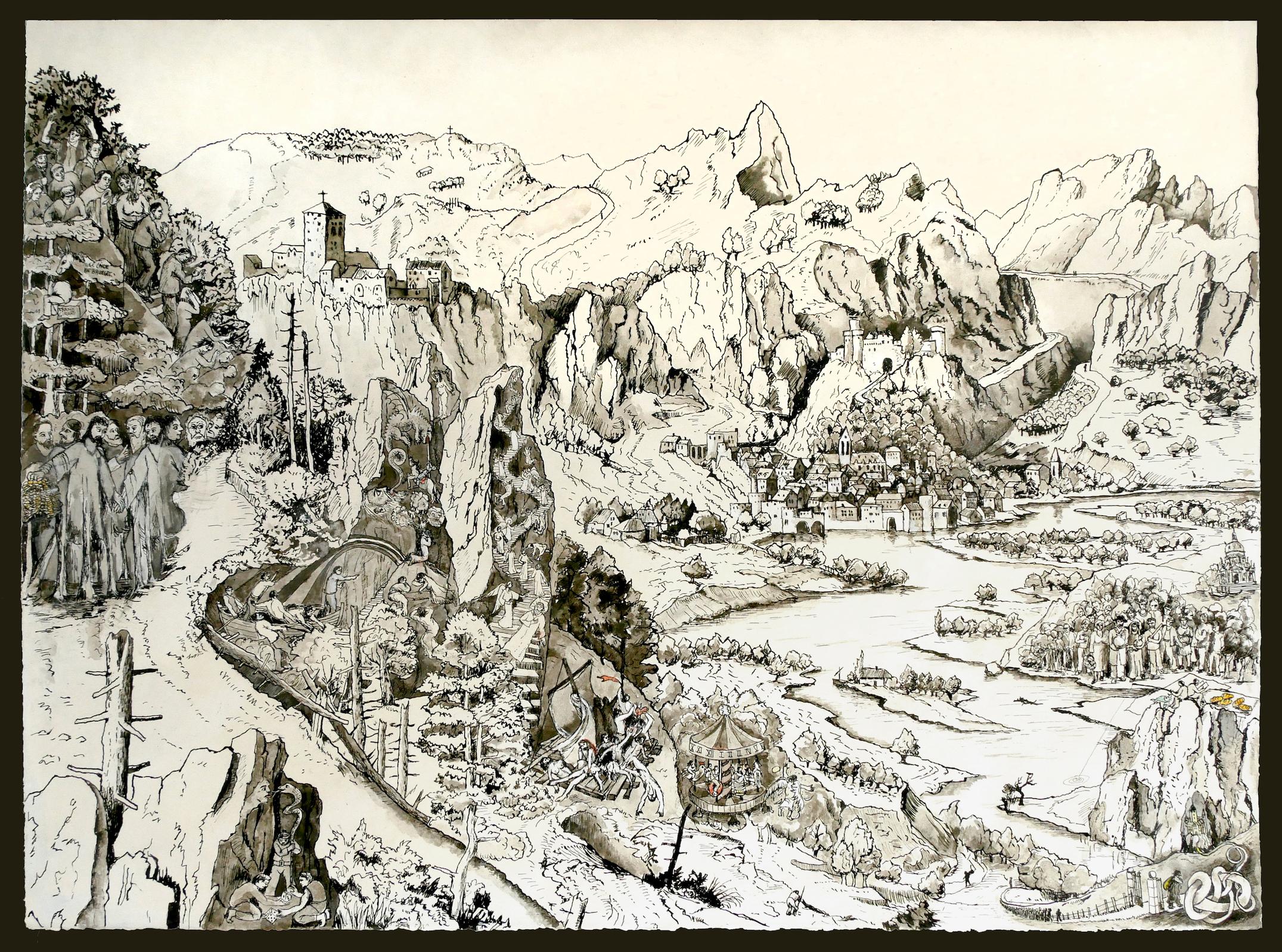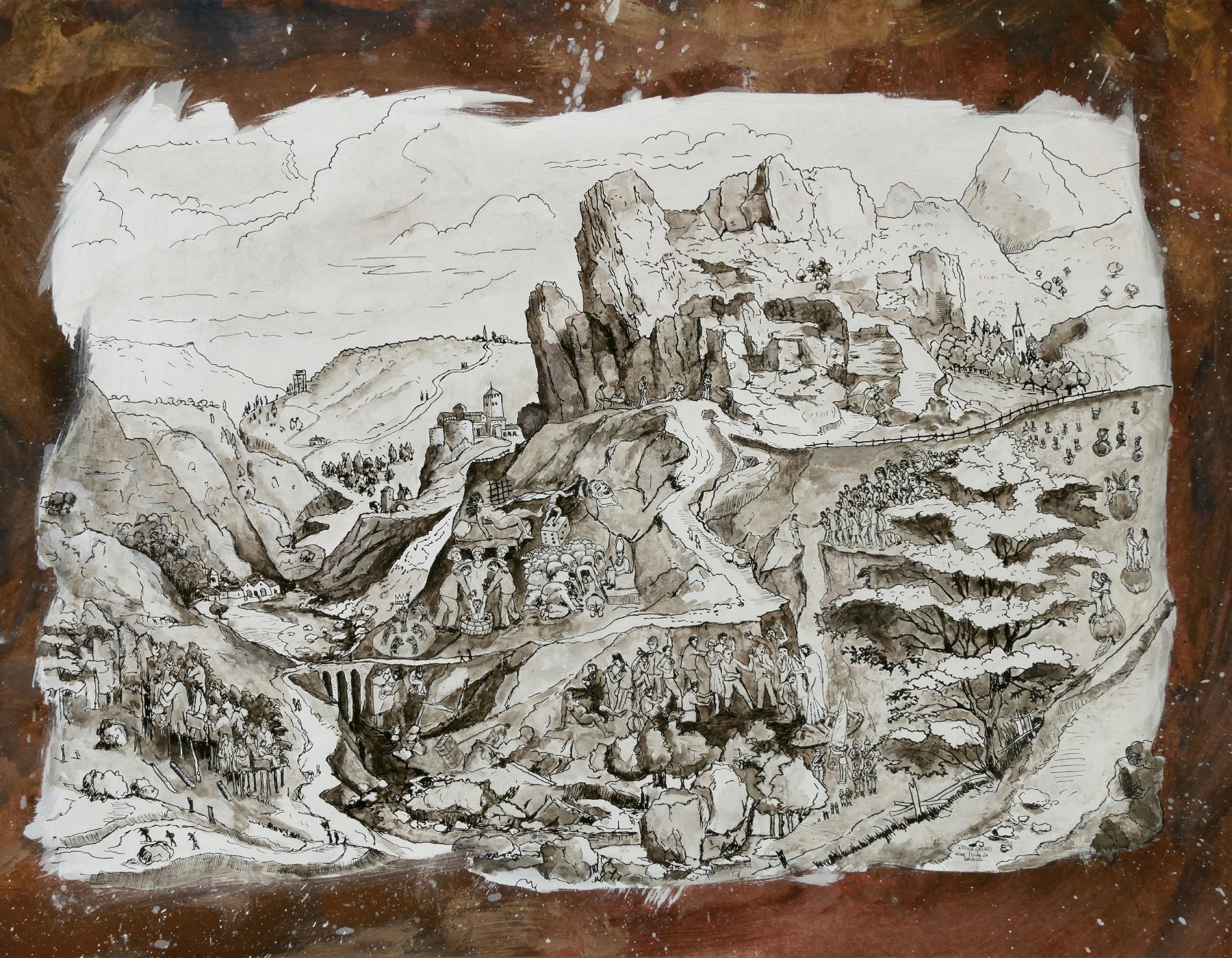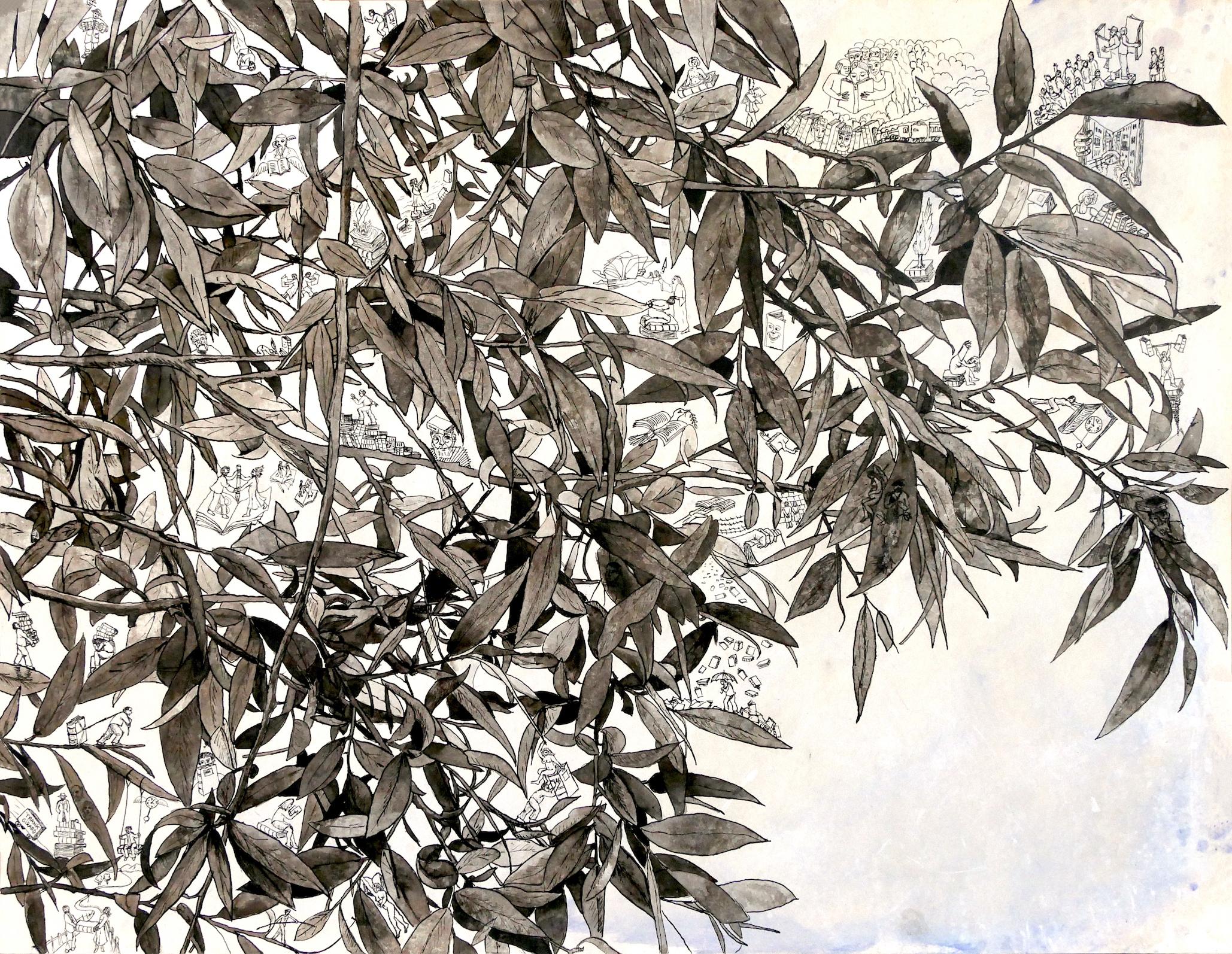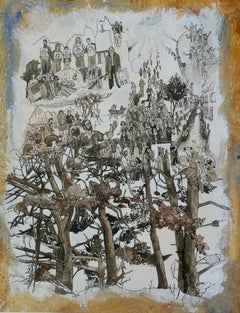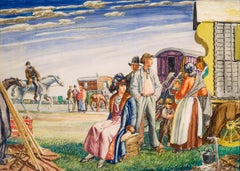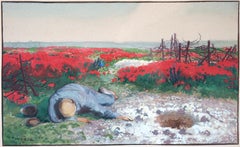
"The Witness", Man Rooted on the Earth Looking Toward Horizon, Bronze Sculpture
View Similar Items
Want more images or videos?
Request additional images or videos from the seller
1 of 5
Frank Girard"The Witness", Man Rooted on the Earth Looking Toward Horizon, Bronze Sculpture
About the Item
- Creator:
- Dimensions:Height: 11.82 in (30 cm)Width: 5.52 in (14 cm)Depth: 3.94 in (10 cm)
- Medium:
- Movement & Style:
- Period:
- Condition:
- Gallery Location:Clermont-Ferrand, FR
- Reference Number:1stDibs: LU104118970062
About the Seller
5.0
Gold Seller
These expertly vetted sellers are highly rated and consistently exceed customer expectations.
Established in 2018
1stDibs seller since 2018
187 sales on 1stDibs
Typical response time: 2 hours
More From This SellerView All
- "Shepherds of Arcadia ", Trees, Human in Nature, Pigments and Drawing on PaperBy Frank GirardLocated in Clermont-Ferrand, Auvergne-Rhône-AlpesThis drawing by Frank Girard is created with pigments and ink, on 300g/m2 neutral white paper. It is not framed. Through drawings, the masterful French a...Category
2010s Realist Figurative Drawings and Watercolors
MaterialsPaper, Ink, Pigment
- "The Small Collar", Trees Inhabited by Human, Paper Drawing with Pigment ColorsBy Frank GirardLocated in Clermont-Ferrand, Auvergne-Rhône-AlpesThis drawing by Frank Girard is created with ink and pigments Colors, on 300g/m2 neutral white paper. It is not framed. Through drawings, the masterful French artist Frank Girard is...Category
2010s Realist Figurative Drawings and Watercolors
MaterialsPaper, Ink, Watercolor, Pigment
- "San Michele Di Venezia", Trees Inhabited by Human, Paper Drawing with PigmentsBy Frank GirardLocated in Clermont-Ferrand, Auvergne-Rhône-AlpesThis drawing by Frank Girard is created with Chinese ink and pigment Colors, on 300g/m2 neutral white paper. It is not framed. Through drawings, the masterful French artist Frank Gi...Category
2010s Realist Figurative Drawings and Watercolors
MaterialsPaper, Ink, Pigment
- "Edge of the Path", Grass Inhabited by Human, Chinese Ink and Wash DrawingBy Frank GirardLocated in Clermont-Ferrand, Auvergne-Rhône-AlpesThis drawing by Frank Girard is created with Chinese ink and wash drawing on 120g/m2 neutral white paper. It is not framed. Through drawings, the masterf...Category
2010s Realist Figurative Drawings and Watercolors
MaterialsPaper, Ink
- "Great Pine", Tree Inhabited by Human in Nature, Drawing and Pigments on PaperBy Frank GirardLocated in Clermont-Ferrand, Auvergne-Rhône-AlpesThis drawing by Frank Girard is created with pigments, Chinese ink, watercolors, acrylic, and colored pencils on 300g/m2 neutral white paper. It is not fr...Category
2010s Realist Figurative Drawings and Watercolors
MaterialsPaper, Ink, Watercolor, Pigment, Acrylic, Color Pencil
- "The Gate", to Interior Castle Pigment & Chinese Ink Large Landscape DrawingBy Frank GirardLocated in Clermont-Ferrand, Auvergne-Rhône-AlpesNamed "The Gate", this drawing by the masterful artist Frank Girard is created with Chinese ink, pigments, and watercolors on Arches paper. When creating large drawings, the artist u...Category
2010s Realist Figurative Drawings and Watercolors
MaterialsLacquer, Paper, Ink, Pigment
You May Also Like
- Wroclaw - Contemporary Watercolor & Ink Landscape Painting, ArchitectureBy Mariusz SzałajdewiczLocated in Warsaw, PLMariusz Szalajdewicz (b. 1974) Studied at the Faculty of Architecture at Warsaw University of Technology, where he mastered the drawing skill. Architect and urbanist, illustrator. ...Category
21st Century and Contemporary Realist Landscape Drawings and Watercolors
MaterialsInk, Watercolor, Paper
- Harry Morley - The Romany Camp - 20th Century British watercolourBy Harry MorleyLocated in London, GBHARRY MORLEY, ARA, RWS (1881-1943) The Romany Camp Signed and dated 1927 Watercolour and bodycolour, framed 36.5 by 52cm., 14 ¼ by 20 ½ in. (frame size 60.5 by 75 cm., 23 ¾ by 29...Category
Early 20th Century Realist Landscape Drawings and Watercolors
MaterialsWatercolor
- Red blooming war landscape with dead soldier - Bleeding flowers -Located in Berlin, DEJohannes Friedrich Heinrich Hänsch (1875-1945), Red blooming war landscape with dead soldier, 1918. Watercolor and gouache on paper, 15 x 24.5 cm (image), 27 x 37 cm (sheet size / frame), monogrammed and dated "19JH18" at lower left. - Paper slightly darkened About the artwork Despite the relatively small format, the watercolor with an internal frame depicts a panoramic view of a flat landscape stretching to the horizon. As far as the eye can see, the poppies bloom in flaming red. The flowers are not rendered individually, however, creating an almost cohesive red surface. The bright red is interspersed with vegetal green. A complementary contrast that creates an intense color effect. In this color contrast, a white area breaks through from the middle ground, widening towards the foreground and surrounding a brown hole. Next to it, in blue, is the actual protagonist of the painting, the first thing that catches the eye: a dead soldier. Next to him is his helmet, revealing the empty interior. The brown, hollow shape corresponds to the hole in the ground. A shell funnel is surrounded by bright ash, which, like the inverted helmet, becomes a sign of death. The soldier's arms point to the funnel, while the empty helmet paraphrases the calotte of the skull and, like the funnel, thematizes the empty darkness of death. The soldier's body, however, is intact and not - as in Otto Dix's triptych "The War" - a dismembered corpse. Instead, Johannes Hänsch activates the landscape, especially the color, to illustrate a blooming landscape of death that extends from the shell funnel in the foreground to the rising column of smoke on the horizon. If the soldier's body is intact, the tangle of barbed wire emblematically placed over the empty helmet also appears tattered. On the right side of the picture, the barbed wire even seems to stretch its arms to the sky in horror. Against the background of this allegory, the content of the bright red also becomes clear: the landscape is drenched in blood, literally a sea of blood, and the single unknown soldier stands pars pro toto for all those who died on the battlefield. Dying in war is not dying in community, but in solitude. In order to emphasize the isolation in death, Johannes Hänsch has set the blue of the soldier in the axis given by his body in the middle ground of the picture into the red sea. A master of landscape painting, Hänsch succeeds in creating a natural-looking landscape allegory that illustrates the horror and death of war, without depicting the brutality of war itself. This singular 'war memorial' of the unknown soldier is the opposite of heroization and yet the dignity of the deceased soldier is preserved through the integrity of his body. About the artist As the son of the sculptor Adolf Haensch, the young Johannes received his first artistic training in his father's Berlin studio. However, he eventually decided to become a painter, and in 1897 he entered the Berlin Academy of Arts. He initially studied under Paul Vorgang and Eugen Bracht, and was particularly influenced by Bracht's increasingly colourful landscape painting. In 1901 he moved to the class of Friedrich Kallmorgen, with whom he spent several weeks on excursions into nature. In 1905 he became a master pupil of Albert Hertel, who taught him watercolour painting. From 1903 to 1933 he exhibited annually at the Great Berlin Art Exhibition, the exhibitions of the Berlin Artists' Association and the Munich Glaspalast. In 1905 he was awarded the Carl Blechen...Category
1910s Realist Figurative Drawings and Watercolors
MaterialsWatercolor
$1,215 Sale Price20% Off - Wettersteinkamm - The blue of the mountains -Located in Berlin, DEAdalbert Holzer (1881 Munich - 1966 Munich). Wettersteinkamm. Watercolour, 29 x 34.5 cm (visible size), 37.5 x 43 cm (frame), signed and dated at lower right 'ADALBERT HOLZER [19]23'. Framed behind glass. Frame shows signs of wear. - The blue of the mountains - About the artwork The Wetterstein ridge is revealed to the viewer from a gentle, snow-covered hill. In contrast to conventional depictions of mountains, the painting is composed entirely of shades of blue, which condense into the blue-grey of the rock or fade into the white of the snow. As a complementary colour to the blue, Holzer virtuously activates the ochre ground. The uniform yet exciting polarity of the colours emphasises the massive majesty of the mountains and at the same time underlines the special character of the Wetterstein ridge. Holzer transferred the translucency of glass painting, in which he was originally trained, to watercolour and developed a pictorial language related to the art of Ferdinand Hodler, which earned him the nickname 'Master of Blue' and led to the appreciation of his watercolours in particular. About the artist After an apprenticeship as a stained glass painter at the Kunstgewerbeschule, Adalbert Holzer studied at the Munich Art Academy under Carl von Marr...Category
1920s Realist Landscape Drawings and Watercolors
MaterialsWatercolor
$824 Sale Price20% Off - Evening Cottage Scene / - Somewhere in Nowhere -Located in Berlin, DEArthur Claude Strachan (1865 Edinburgh - 1954 Minehead), Evening Cottage Scene. Watercolor on paper, mounted, 28 x 46 cm (visible size), 48 x 65 cm (fra...Category
Early 1900s Realist Landscape Drawings and Watercolors
MaterialsPaper
$2,083 Sale Price20% Off - Wind Dodgers at the Baltic SeaLocated in Berlin, DETheodor Scheerbaum (1897 Reichenbach im Vogtland), Wind Dodgers at the Baltic Sea. Watercolor on strong yellowish grained paper, 44 x 56 cm, signed by hand "Th[eodor] Scheerbaum" at ...Category
1950s Realist Landscape Drawings and Watercolors
MaterialsWatercolor
$503 Sale Price20% Off
